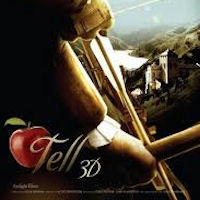
Director Eric Brevig has begun prepping the US$27m feature William Tell: 3D based on the Swiss folk hero and starring Brendan Fraser. Brevig, who directed the stereoscopic features Journey to the Center of the Earth (also with Fraser) and Yogi Bear, says the stereography will depend on how much of the work is done on location. “If I am using a lot of VFX to extend sets it might limit some of my photographic options,” he says. “I intend to make the stereo nonintrusive to give a feel for the period in which the film is set in the late 1400s. I will use the 3D to enhance the character of William Tell, who is a world class archer, and therefore has this heightened visual perception.”
Principal photography on the Arclight Films production begins in the spring at Castel Studios in Romania and on location in Switzerland. Brevig explains that he will likely use slow motion and macro photography, and that “3D should not be a standalone trick, but something that is embedded along with other film crafts.”
He added: “Given the economic practicality of production, if 95% of all edits and shots work equally well in 2D and 3D – and there are 5% of shots you wish to linger on because they work better in 3D – you have to ask if it’s worth the hundreds of thousands of dollars to make multiple edited versions and to track those versions to post facility houses and then the 3D theatres. Usually the answer is no.
“That said, when you are shooting in 3D, you are also aware that your audience will have another layer, sometimes a subliminal layer, which adds to their appreciation of the story.
“At one extreme you can throw everything at the lens; at the other you can have a film that is nominally stereo but which barely leaves the screen plane. Both are valid and are a subjective choice based on the tone of the film. With a comedy you can get away with far more than with a drama, which will only distract from the narrative. There is no right or wrong, just good and bad judgement.
“The studios, for the most part, are keen to make additional profit by adding what they feel is a technical modification to the film. Whether or not the filmmaker has embraced 3D, they (the studios) have the ability to take their work in and modify it after the fact. Audiences though are beginning to realise when they see a film that is not necessarily crafted in 3D by design, or that the director just didn’t have the appetite or interest in using the stereo set of tools, that it is not the same as one in which the filmmaker made creative use of these tools.”






